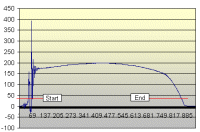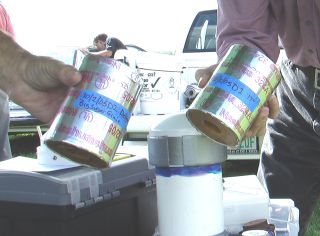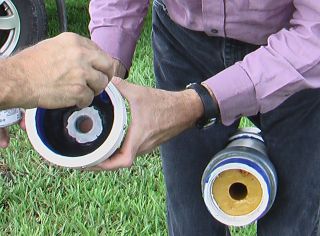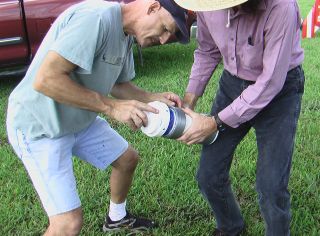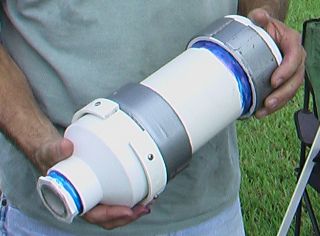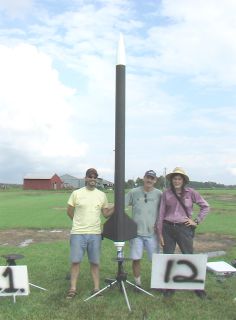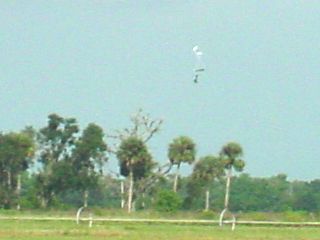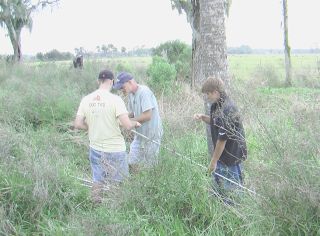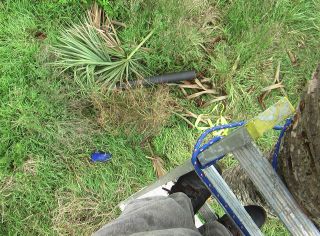
These are just the parts, assembled temporarily for photographic purposes. It does not yet have the graphite throat, set in Rock-Ite. It is also missing a ring of PVC that will be placed around the nozzle end which serves as a thrust ring.
The first motor had a nozzle made entirely of Rock-Ite. It worked, but eroded quite a bit. So for subsequent tests, Steve turned a nozzle throat of graphite and embedded it in the Rock-Ite.
